La Maison Salentina was built amidst the streets of an ancient Salentine village at the southern end of the Capo di Leuca. The history of this house dates back more than two hundred years, when skilled local craftsmen built the first two small rooms, characterised by modest star vaults dating back to 1800. These volumes were joined - in the following century - by a room with a majestic cross vault, followed later by the other more recent rooms, which even covered the typical inner courtyard.

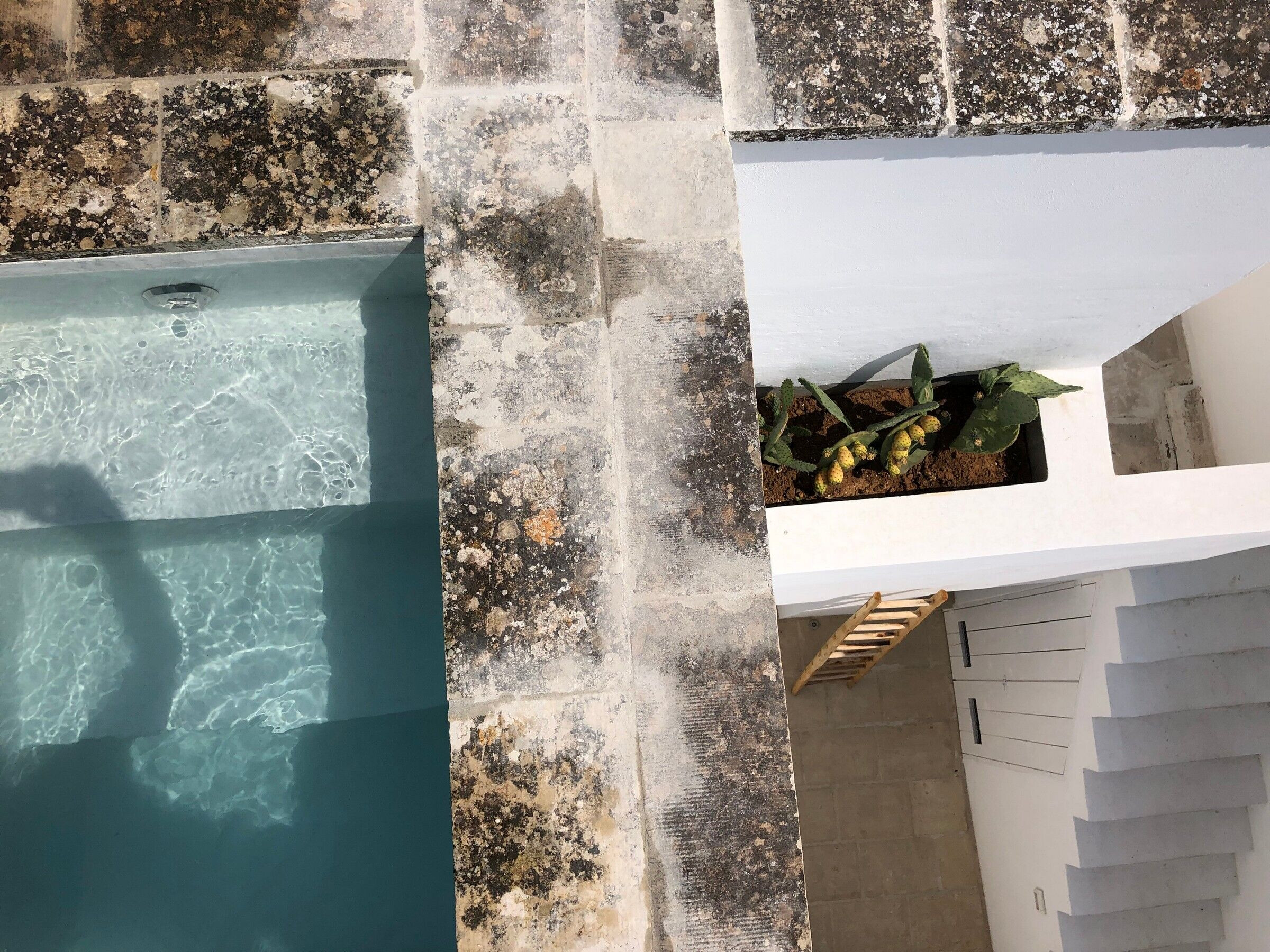
During the renovation phase, priority was given to the demolition of the most recent layer, in order to recreate the original inner courtyard, a typical feature of the Acqua di Puglia dwellings, thus filling the shaded interior of the building with light, space and air. We then proceeded with the remaking of all the installations, eliminating some plaster sections in order to let the beautiful original wall texture shine through. The finishes were carefully chosen with the aim of respecting the local identity and enhancing the craftsmanship of the area: chianche tumbled Lecce stone and micro-cement as flooring, pure lime on the walls and sky-blue wooden window frames.
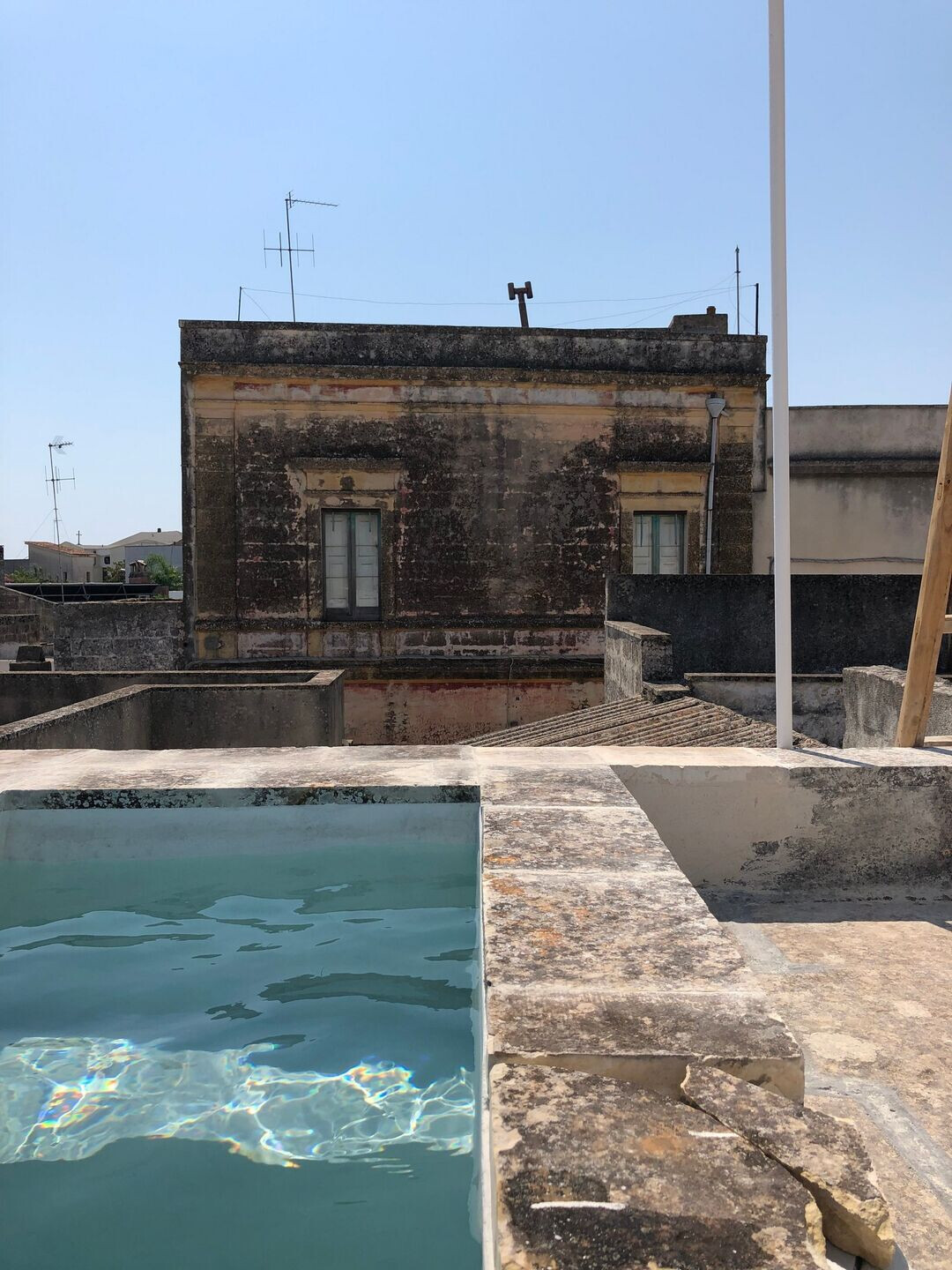

An original old staircase, carefully cleaned and re- plastered, provides access to the upper terraces where, by exploiting the different heights, it has been possible to play with space, creating many small places for reading and relaxing. By exploiting an existing old volume, it was also possible to insert a small pool, indispensable for cooling off during the hot Salentine days. The Maison Salentina has the typical characteristics of the Apulia landscape: solid walls, blue Mediterranean-style window frames and a system of terraces covered with the classic chianche in Leccisu (Lecce stone). The last of the three terraces is furnished in arabesque style, recreating a peaceful corner with a Moroccan flavour, where one can let oneself be kissed by the sun while sipping tea by the small pool set in the heart of the terrace.

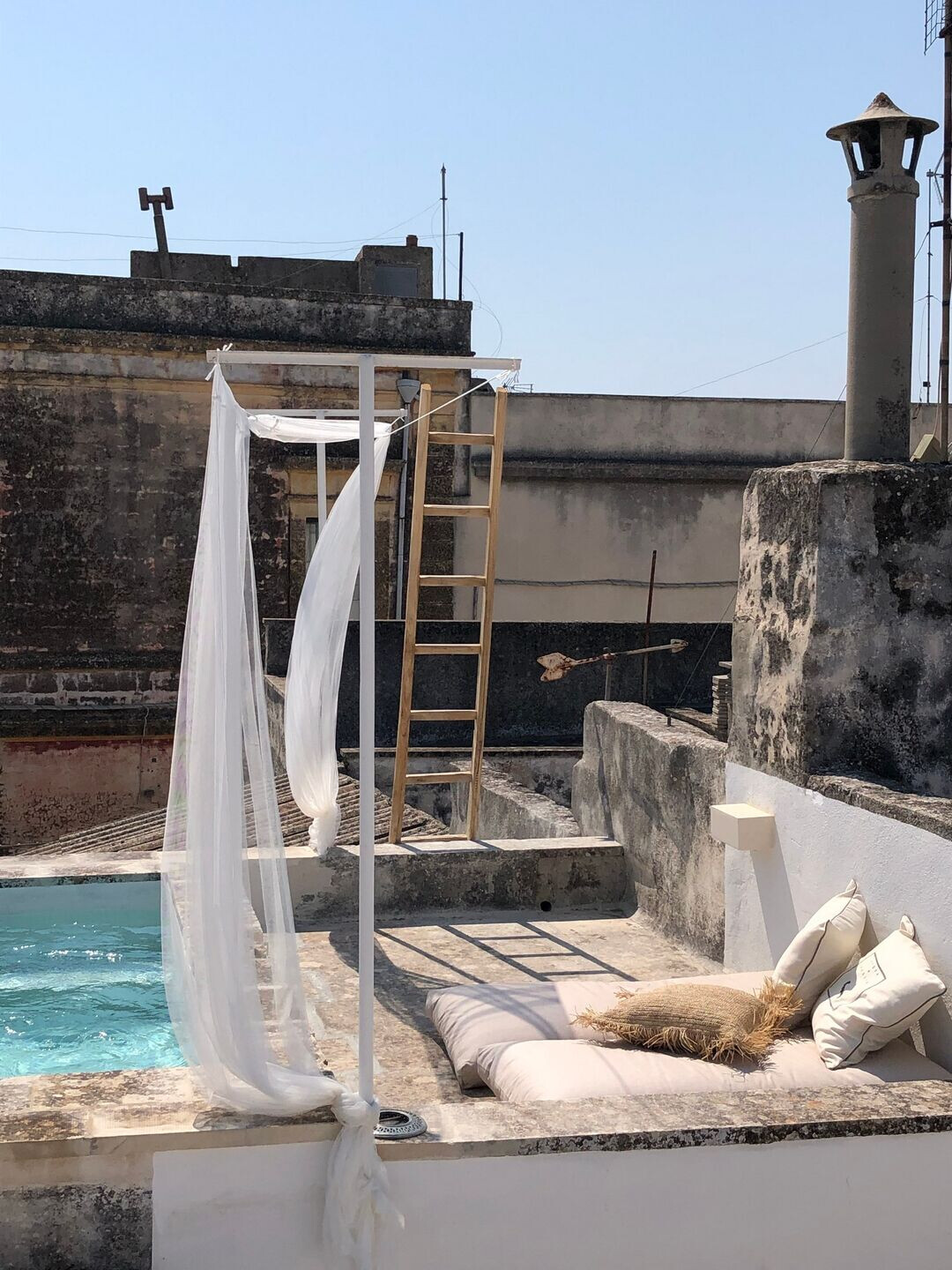
What were the key challenges?
For us, it is fundamental that our homes feature elements that translate the essence of this land, and it is for this reason that we rely on local realities that work with local raw materials to complete the furnishing of our structures, creating incredible objects. Our collaborators are simple, authentic and strictly local people: people who know how to work with their materials and who create unique pieces with their creativity. I have a wonderful memory of the day when, during our constant inspections, we met an old man from Gallipoli who was making fishing creels in his garage: passing by, the beauty of his production left us speechless. From that moment on, he became our craftsman of marvellous creels to hang on the walls as furnishing accessories.

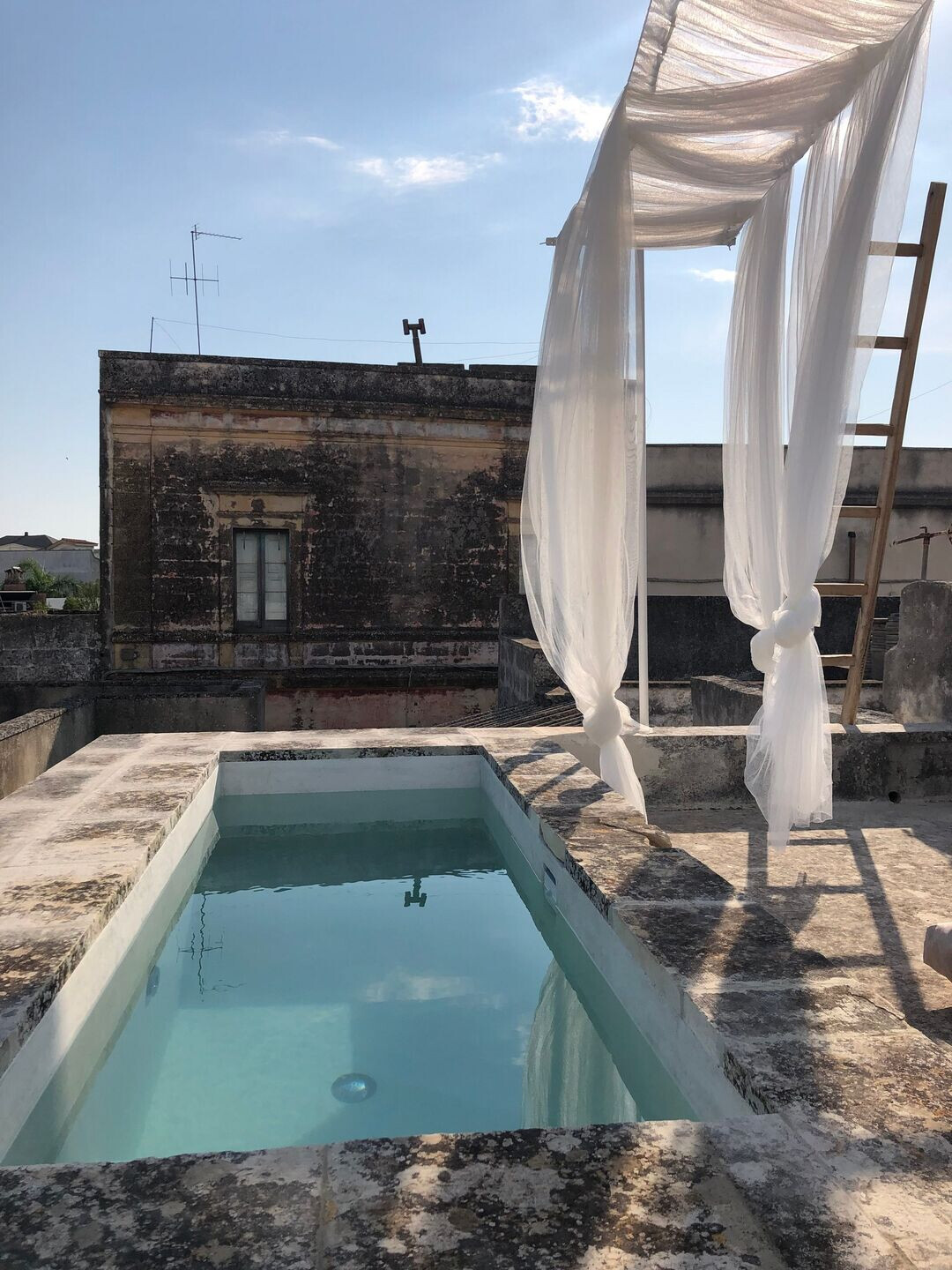
Real redevelopment of the territory can only start, in our opinion, from the people who inhabit it. We always involve the latter in our work, as we find that it is fundamental to fully understand a place by establishing a sincere relationship with those who have lived there for generations. We rely completely on the skill and artistry of the local labourers, who skilfully use their precious raw materials.
Apulia is an Italian region with a long and varied history: sea, countryside and historic centres intertwine to create an evocative and, to say the least, incredible landscape. Being a humble people with a great attachment to their land and large olive groves, the Apulians have been able to preserve the agricultural tradition by keeping both the historical centres and the countryside, where majestic masserie (farmhouses) stand intact.

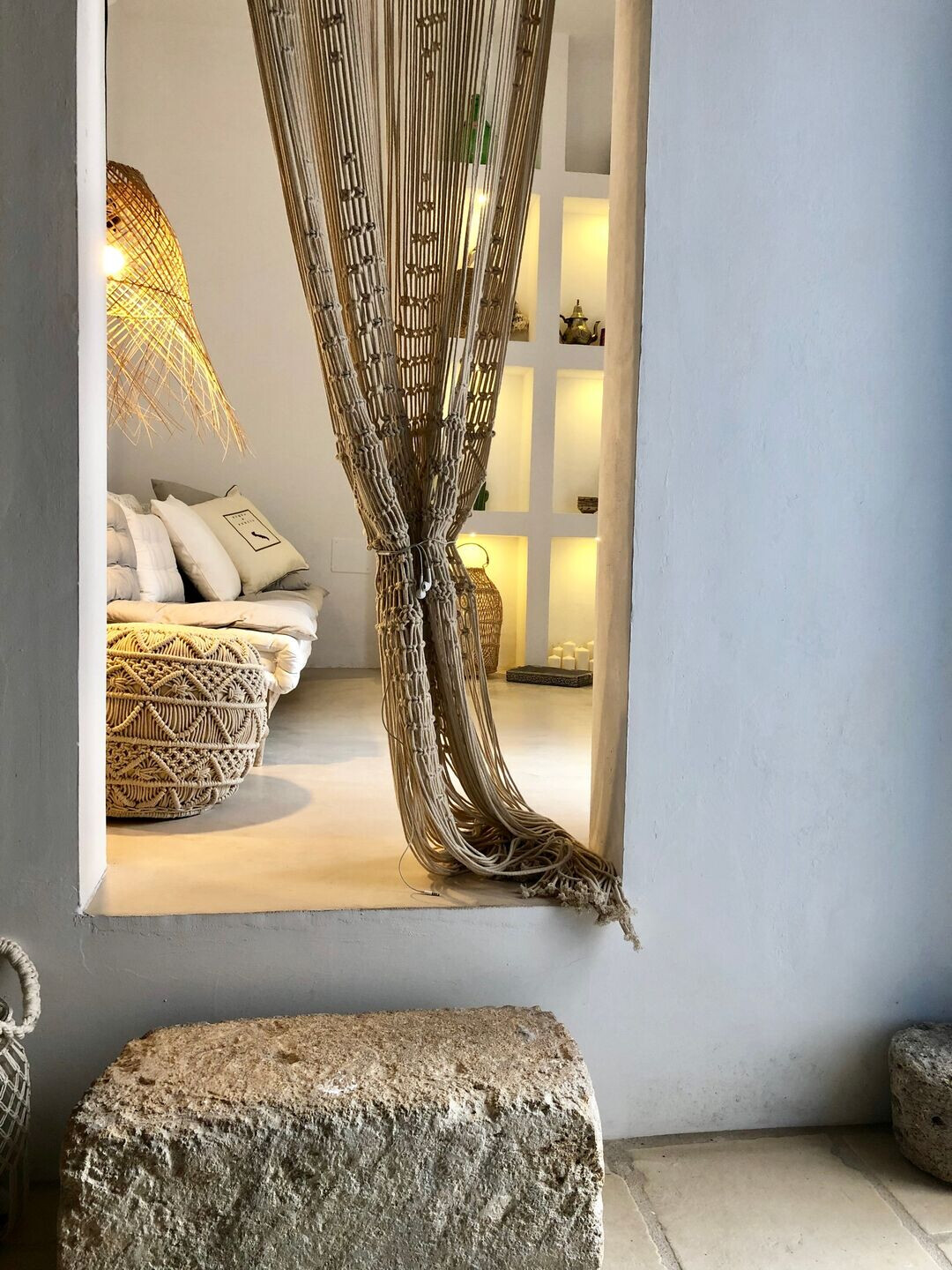
What materials did you choose and why?
The respect we pay to the raw materials and the structure we restore is absolute: being born in Italy means a lot to us. Our architecture is essential but at the same time the and warm, without being ostentatious: PIETRA LECCESE and PIETRA DI TRANI are The main materials we use, added to wood and aluminium.


Team:
Architect: Acqua di Puglia
Photography: Silvia Brambilla

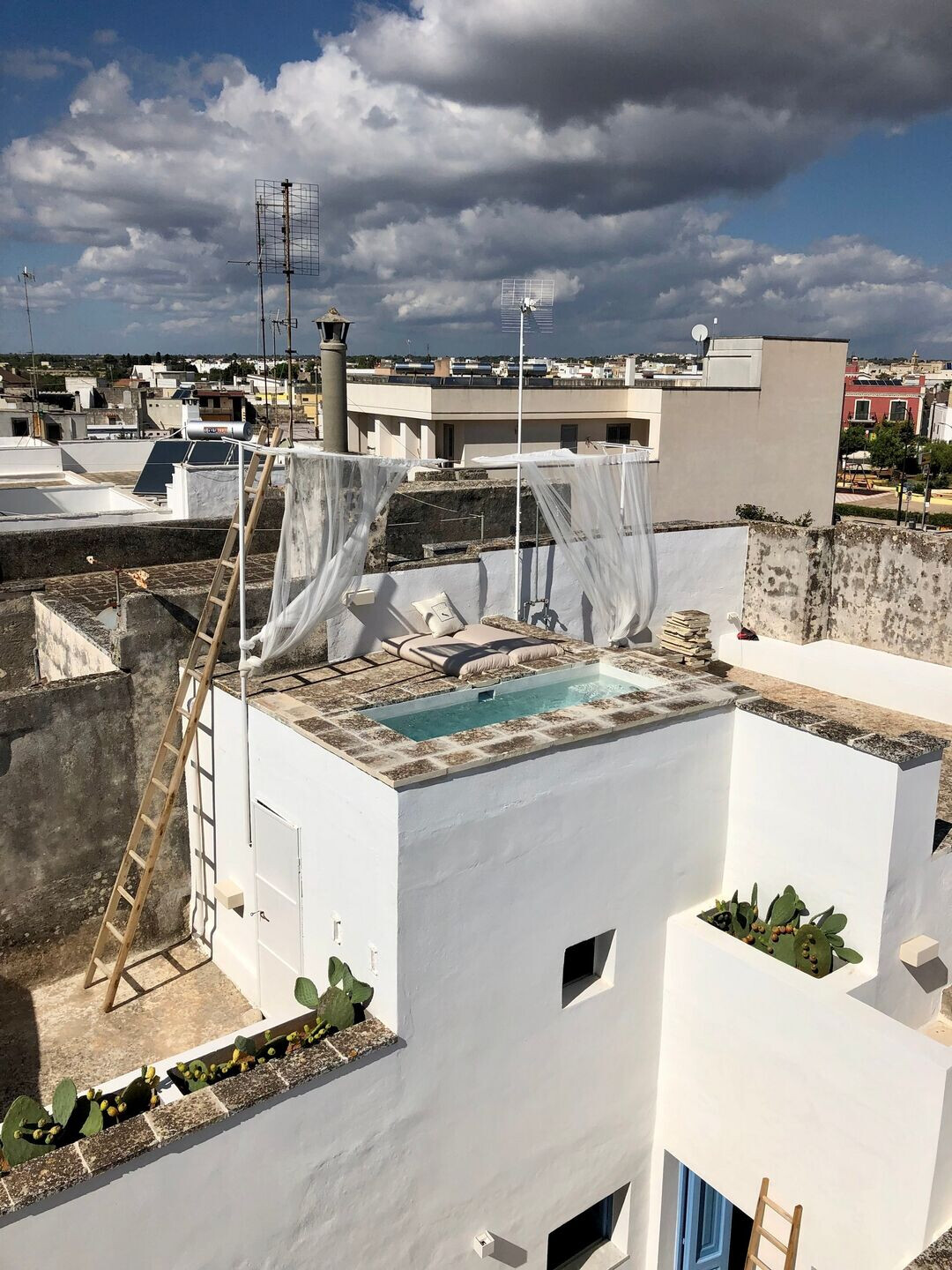
Material Used:
1. Facade cladding: Intonaco a calce bianca
2. Flooring: Pietra di Trani
3. Doors: Wood
4. Windows: Wood
5. Roofing: Pietra leccese
6. Interior lighting: Led with energy saving
7. Interior furniture: Local furniture made by local artisans - see section “interior design collection” on our website














































